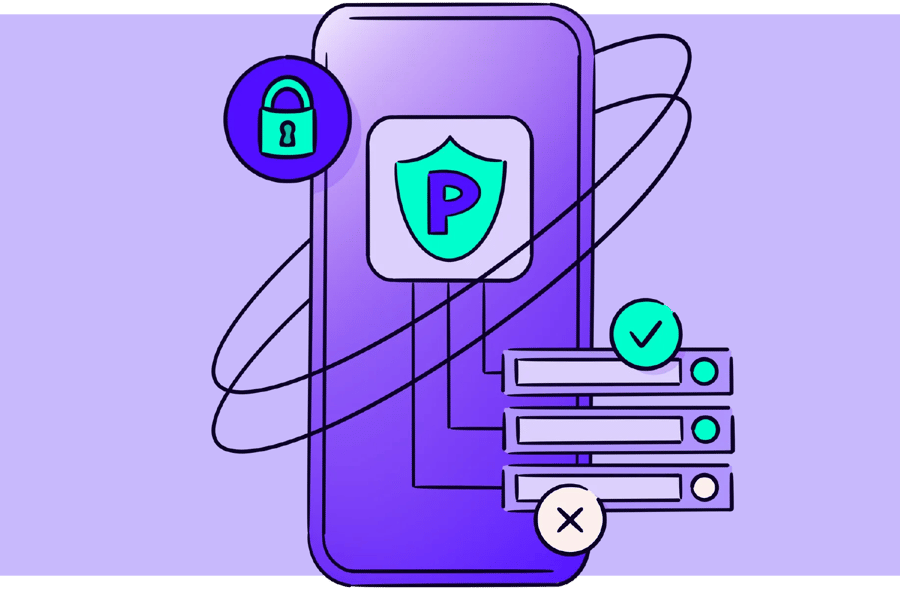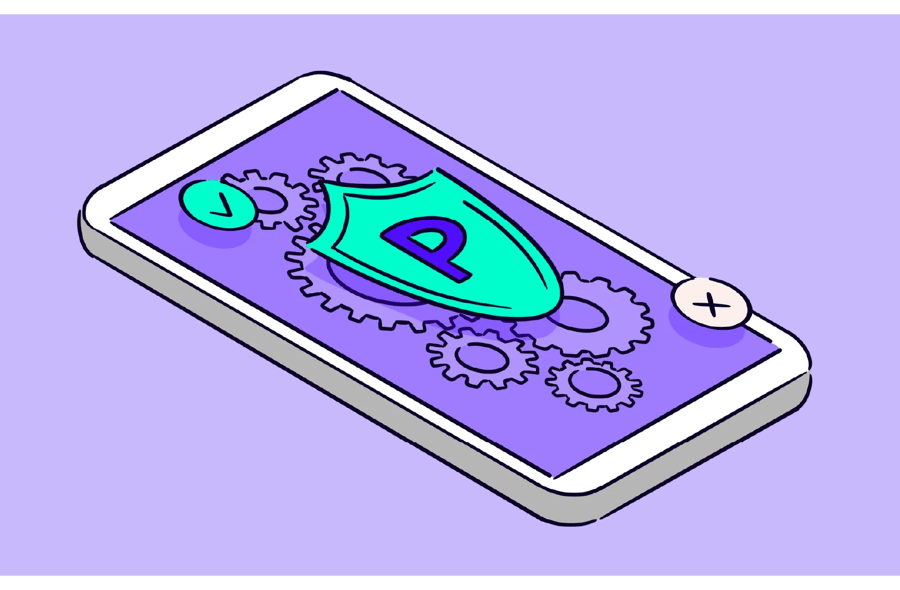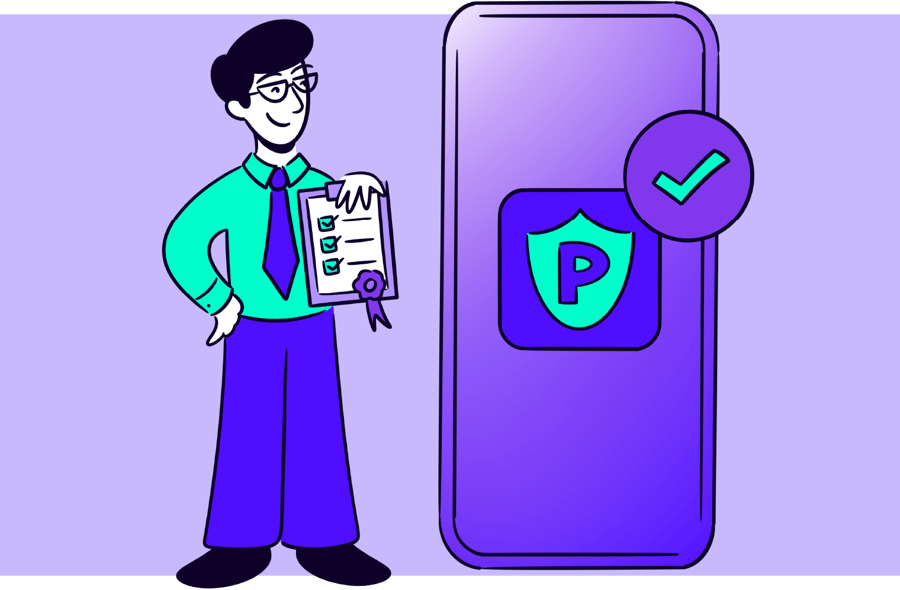Create a safer digital world for your citizens

The growing need for advanced protection in public sector mobile apps
- Prevent malware, phishing, and reverse engineering attacks
- Maintain service integrity and public trust
- Defend against cyber threats and unauthorized access
- Meet compliance and national security standards
Advanced mobile app protection, simplified
-
1
Prevent unauthorized access
Reverse engineering can reveal vulnerabilities, enabling attackers to exploit sensitive government systems or citizen-facing features.
-
2
Protect sensitive data and infrastructure
Safeguard critical algorithms, security protocols, and app infrastructure from being stolen, copied, or exploited by malicious actors.
-
3
Ensure public trust and service integrity
App tampering can compromise functionality, disrupt essential services, and erode citizen trust in systems. Robust security preserves integrity and reliability.

-
1
Secure sensitive data at rest
Protect citizen and government data with layered encryption, preventing unauthorized access or breaches, even if a device is lost or compromised.
-
2
Defend against active threats
Runtime protection thwarts real-time threats like code injection, tampering, and malware to shield apps running in untrusted or compromised environments.
-
3
Comprehensive security
By combining both at-rest and runtime protection, governments can protect sensitive public sector apps against data theft and real-time attacks.

-
1
Stop reverse engineering
Prevent attackers from analyzing your app’s code with advanced obfuscation techniques that conceal its logic while preserving functionality.
-
2
Fortify your systems
Robust authentication, secure APIs, and runtime protection prevent attackers from exploiting vulnerabilities to access to critical systems or data.
-
3
Tamper detection and prevention
Block tampering and modifications to the app’s code to maintain integrity and prevent malicious actors from injecting harmful exploits to expose sensitive data.

-
1
Meet regulatory standards
Ensure compliance with GDPR, regional cybersecurity laws, and further regulations for secure eGovernment applications.
-
2
Defend against national security threats
Protect critical systems and sensitive citizen data from cyber threats that could compromise national security.
-
3
Foster trust in digital services
Safeguard app integrity to build citizen confidence in eGovernment platforms and prevent reputational damage from breaches.

Multi-layered protection for eGovernment mobile applications
-
Defend against malware and unauthorized access
Secure eGovernment apps from malware, reverse engineering, and unauthorized access to ensure the integrity of citizen-facing services. -
Safeguard against client-side attacks
eGovernment mobile apps act as extensions of government systems and are susceptible to client-side attacks. These threats can compromise app functionality and the security of critical public services. -
Protect third-party integrations and APIs
Secure both first- and third-party apps, as well as APIs, that power essential government services. Public-facing platforms may increase engagement but also pose risks if reverse engineered or manipulated. -
Keep citizen PII secure
Protect sensitive citizen data to comply with regulations and prevent fraud. Breaches not only lead to reputational damage and penalties but also erode public trust in government systems.

Real-time analytics for eGovernment mobile application security
-
Monitor eGovernment app security in real time
Understanding your app’s security landscape is critical for protecting sensitive citizen data and ensuring reliable service delivery. Promon Insight™ delivers actionable analytics to identify vulnerabilities and threats before they compromise operations. With detailed event tracking, your team can proactively maintain robust defenses and safeguard public trust. -
Strengthen security with evidence-based intelligence
Promon Insight™ focuses on actionable insights to address evolving cyber threats. Comprehensive security health reports enable continuous optimization of your defenses. By integrating Promon Insight™, government organizations can move beyond reactive responses to adopt a proactive, resilient strategy for protecting mobile applications and delivering secure, dependable services to citizens.

Protect public sector app assets
-
Safeguard critical app data
Secure API keys, encryption keys, and access tokens from extraction or unauthorized use, ensuring the integrity of government services. -
Avoid operational disruptions
Minimize the impact of breaches or hacking attempts, maintaining uninterrupted service and preserving citizen trust in government platforms. -
Maintain application integrity
Protect essential assets such as authentication tokens and sensitive credentials, ensuring reliable service delivery and safeguarding critical operations.

"Promon is best in market for app security. Best part is the ease of implementation with any application. It is very easy to use. There are a lot of features that are available which ranges from malware detection, code encryption.”
"I like that Promon makes it easy to protect our enterprise environment."
"We chose Promon as an essential layer of defense on top, offering robust protection against diverse attack vectors while minimizing impact on user experience. This balance is crucial for enabling our business and meeting stringent security and regulatory requirements.”
Your public sector app security questions answered
What’s the biggest challenge that mobile app security is trying to address for eGovernment apps?
The most common challenge with protecting public sector mobile applications is safeguarding sensitive citizen data while ensuring compliance with stringent regulations. Public sector apps often handle large volumes of Personally Identifiable Information (PII), such as social security numbers, health records, and financial data, making them prime targets for cyberattacks. Agencies must balance robust security measures to prevent breaches with the need for seamless user experiences and operational continuity. Additionally, meeting legal and regulatory requirements like GDPR, HIPAA, or CCPA while defending against evolving threats adds complexity to their security strategy.
What are the most common attack vectors for public sector mobile applications?
There are several attack vectors to mention due to the sensitivity of the data and the critical nature of the services that public sector mobile apps provide. Some common ones that we address are:
1. Unauthorized access: Exploiting weak authentication mechanisms or vulnerabilities in APIs to gain unauthorized access to sensitive government systems and citizen data.
2. Reverse engineering: Analyzing app code to uncover security flaws, extract sensitive data, or identify ways to bypass protections.
3. App tampering and repackaging: Modifying public sector apps to include malicious code or creating counterfeit versions to deceive users and compromise data.
4. Man-in-the-middle (MitM) attacks: Intercepting communications between the app and backend servers to steal sensitive data, manipulate transactions, or inject malicious commands.
5. Data leakage: Exploiting insecure data storage or improper encryption to access sensitive information stored locally on devices.
6. Runtime exploits: Injecting code or malware during app operation to manipulate functionality, steal data, or bypass security features.
7. API exploitation: Targeting unprotected or poorly secured APIs to access backend systems, compromise data, or disrupt services.
8. Phishing and credential theft: Using fake apps, links, or social engineering tactics to steal user credentials and gain access to government systems.
9. Malware attacks: Delivering malicious software via compromised devices or app vulnerabilities to disrupt functionality or steal data.
10. Compromised devices: Exploiting apps running on rooted or jailbroken devices, which lack standard security protections, to access sensitive data or systems.
By addressing these attack vectors with robust mobile application security measures, public sector organizations can safeguard their apps, data, and the critical services they provide.
How does Promon SHIELD® prevent app tampering and malware attacks?
Promon SHIELD® uses runtime application self-protection (RASP), code obfuscation, and anti-tampering mechanisms to block unauthorized access and modifications. It detects and prevents malware from compromising app functionality or accessing sensitive information, delivering robust, real-time protection.
How does Promon ensure a seamless user experience while securing apps?
Promon SHIELD® delivers deep application security without affecting app performance. Features like anti-tampering and runtime protection work in the background, ensuring a secure and fast interactivity that enhances user trust.

%20an%20Android%20app.jpg?width=400&name=How%20to%20hack%20(and%20secure)%20an%20Android%20app.jpg)

.png)

